Stockton Tramways
History
Stockton's standard-gauge steam tramway, which was owned and operated by the Stockton and Darlington Steam Tramways Company Limited, opened for business on the 17th November 1881. The S&DSTCo already operated a short, 3ft-gauge horse tramway in Darlington — opened on the 10th October 1880 — and though the financial fortunes of the two systems were intimately linked, there was never any physical connection between the two.
The S&DSTCo's main line ran southwards from Norton to Stockton, turning eastwards to cross the River Tees — via Victoria Bridge — to a terminus at the Harewood Arms in South Stockton (now known as Thornaby). Two branches were also constructed — one westwards from Stockton High St to the North Eastern Railway station, and the other westwards from Stockton High St along Yarm Lane to St Peters Church. The latter extensions took the system to its final size of circa 4.75 route miles.
The Stockton tramway was under-capitalised from the start, having raised less money than it had cost to build and equip, the shortfall being made up with loans and debentures. It also had to contend with a severe economic depression that afflicted the whole of the Northeast during the 1880s, and which badly impacted passenger numbers; perhaps inevitably, the company soon found itself unable to service loan repayments and interest charges, let alone pay a dividend. After struggling on for some time, the S&DSTCo entered voluntary liquidation in June 1888, eventually being restructured and emerging the same year under the guise of the Stockton and District Tramways Company, though still trading as the S&DSTCo.
By December 1895, the tramway company was once again in liquidation, with two badly run-down, and badly run systems, both making losses. The following year, the company was purchased by the grandly titled Imperial Tramways Company Ltd, which began life in 1878 — as a London-based company — with the purchase of several tramway systems (in places as diverse as Dublin and Reading) and eventually had a railway interest too (Corris Railway). In the 1890s, the ITCo developed plans for an electric system that would connect Middlesbrough, Stockton and Thornaby, and it was with this aim in mind that it purchased the S&DTCo, having owned the horse-drawn Middlesbrough and Stockton Tramways Company — which despite the name, only ever reached Newport, some two miles east of Stockton — since 1878.
As a precursor to conversion to a 3ft 7in-gauge electric tramway (it should have been 3ft 6ins, but ended up as 3ft 7ins due to a quirk in the way the company measured the gauge), the Stockton lines of the S&DTCo were closed in October 1897, and the Middlesbrough and Stockton Tramways on the 24th December 1897, construction proceeding from Norton through Stockton to Middlesbrough. The last steam service probably ran on the 3rd October 1897, the first electric service commencing nine months later on the 13th July 1898.
Uniforms
The photographic record is unfortunately rather poor, but it does show that steam tram drivers wore typical railway-footplate like attire, comprising cotton jackets and trousers, along with cotton or cloth caps. Conductors simply wore informal but smart attire: jacket, trousers, shirt and tie, along with the fashionable headgear of the day, invariably the bowler hat. No badges of any description appear to have been worn on either the jackets or the hats.
Photographs of inspectors are unknown, so it is currently impossible to say if they wore company uniforms or insignia, or indeed, whether the company even employed them at all.
Further reading
For more information on Stockton's steam tramway, see: 'A History of the British Steam Tram — Volume 5' by David Gladwin; Adam Gordon Publishing (2008).
Images
Steam Tram drivers and conductors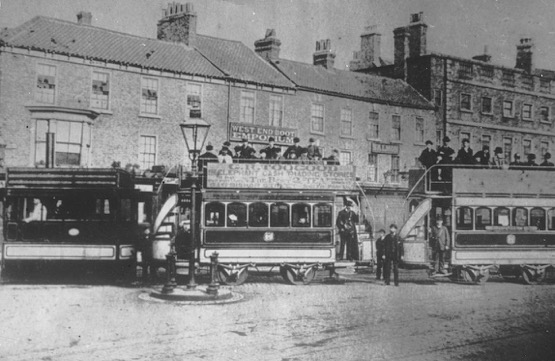
A Merryweather-built steam tram and two Starbuck trailers stand outside the Grey Horse Inn, Stockton — photo purportedly taken around 1887, though given the absence of advertisements on the engine, and the rather pristine condition of the trailers, very possibly taken in the early-to-mid 1880s. Photo courtesy of the National Tramway Museum.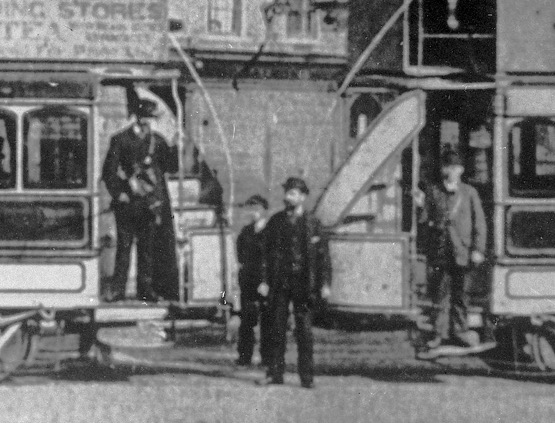
A blow-up of the above photo showing two conductors, both of whom are wearing informal attire, along with bowler hats.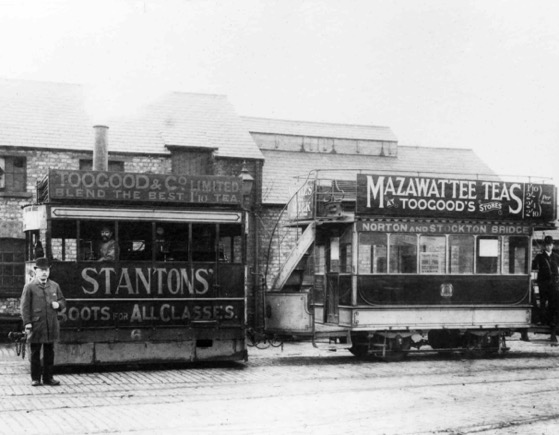
Steam Tram No 6 (a Merryweather product of 1881) stands with Trailer No 8 in what is probably the depot yard at Bridge Rd — photo undated, but certainly taken before the line was extended to South Stockton in 1887. Photo courtesy of David Gladwin, with thanks to Trevor Preece.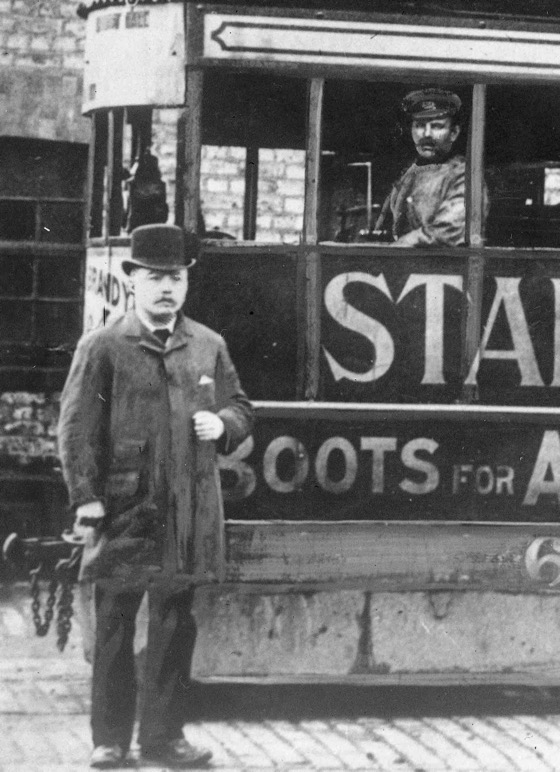
An enlargement of the above photo showing the driver, and a man who is in all probability, the manager or depot foreman. The negative appears to have been heavily and crudely modified (there is evidence of brushwork on both the tram engine and the two figures), so it isn't entirely trustworthy; therefore, although the driver appears to have some kind of badge on his cap, this should not be considered as evidence that a cap badge was indeed worn.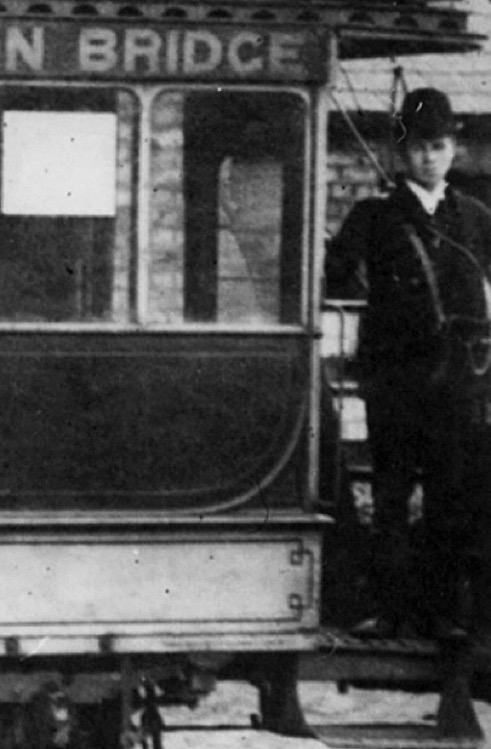
Another blow-up of the above photo, this time showing the conductor; he is clearly wearing informal attire along with a bowler hat, all without insignia of any kind.